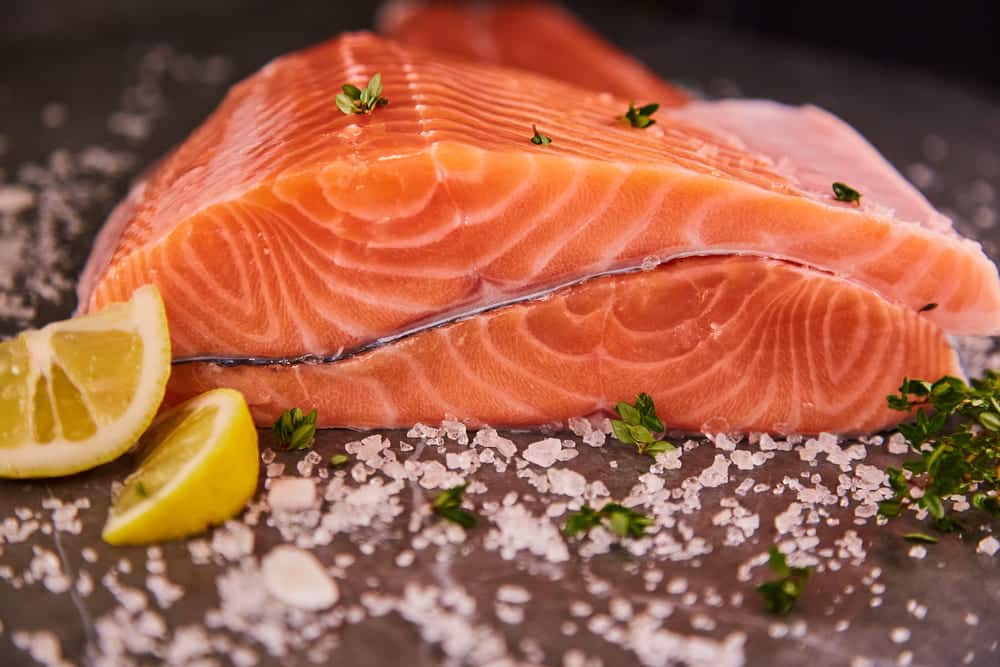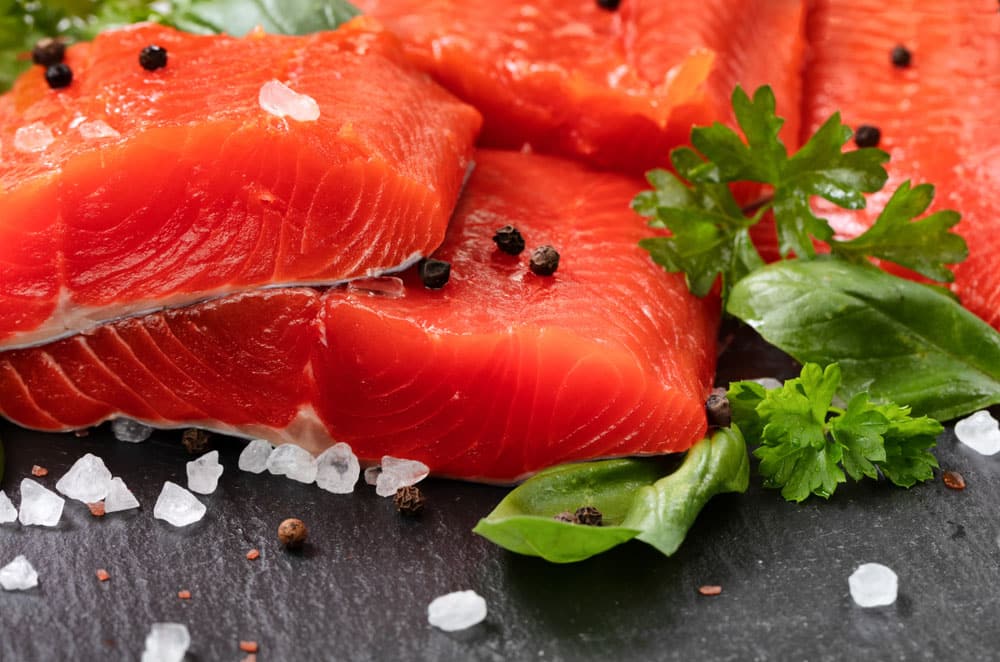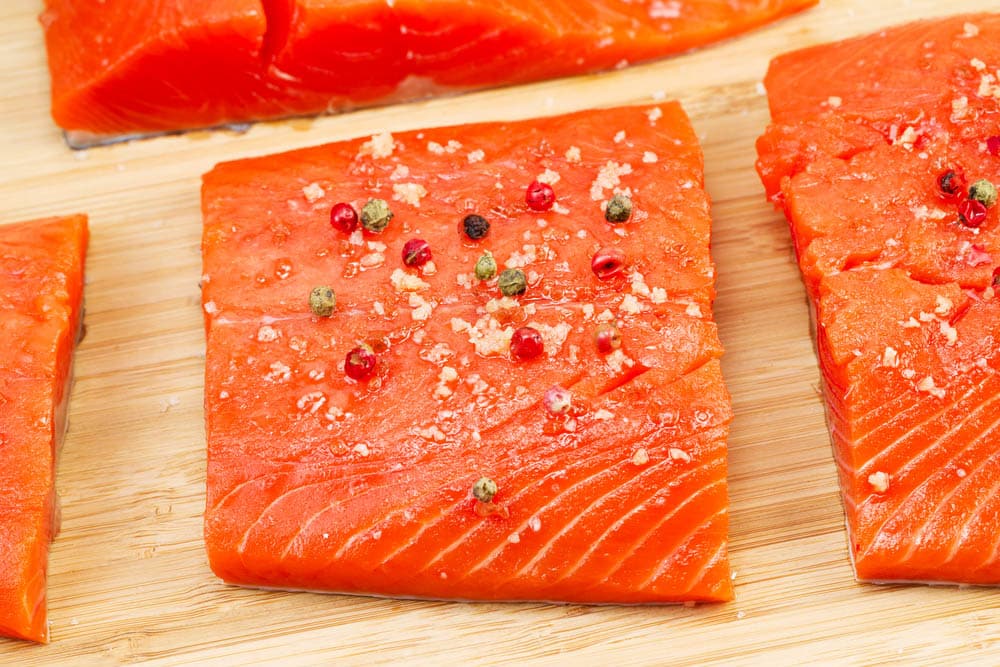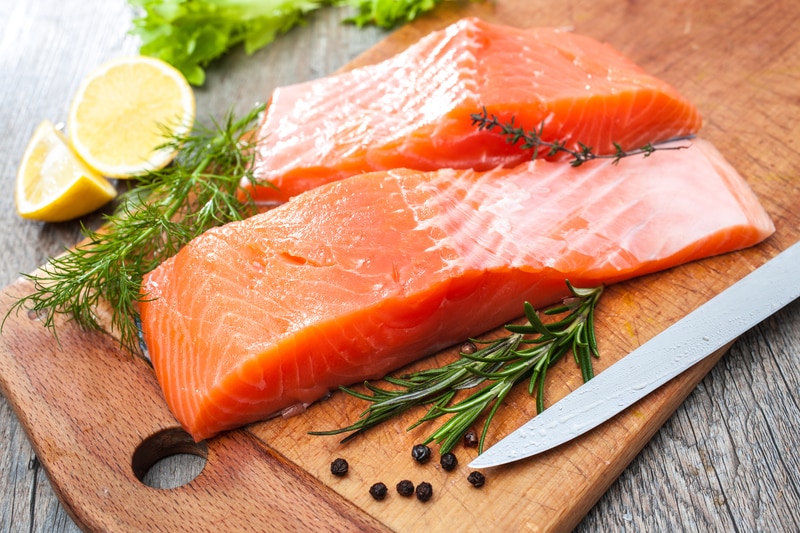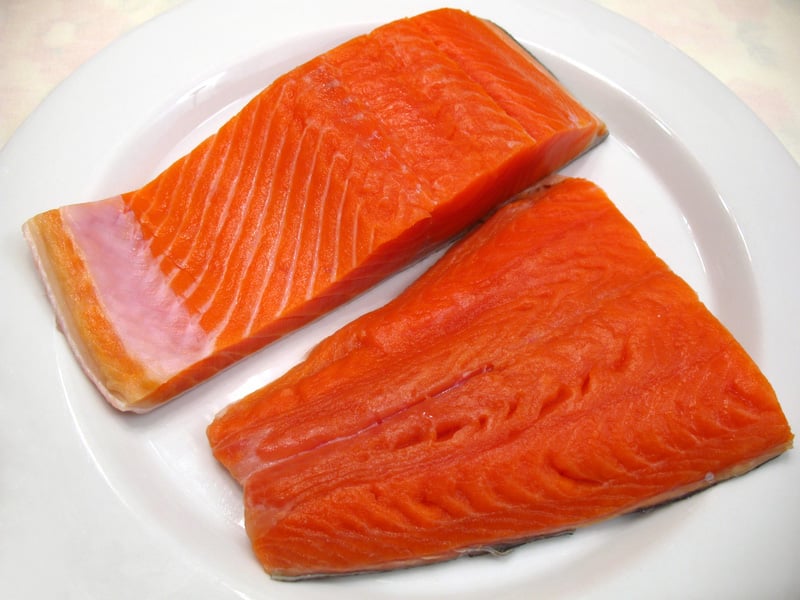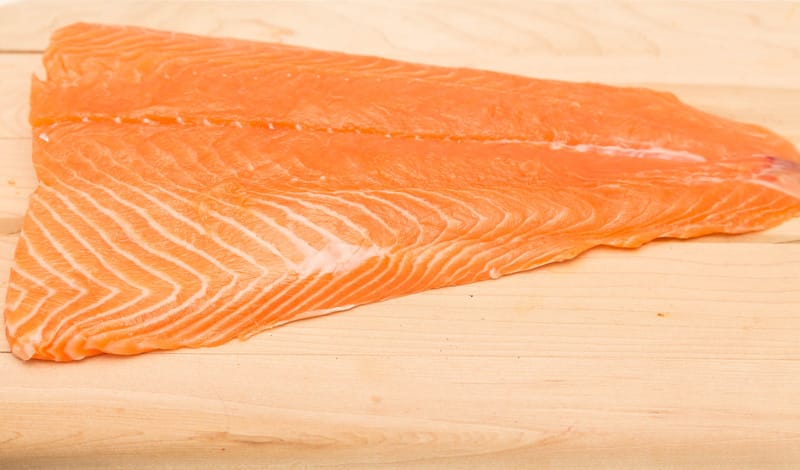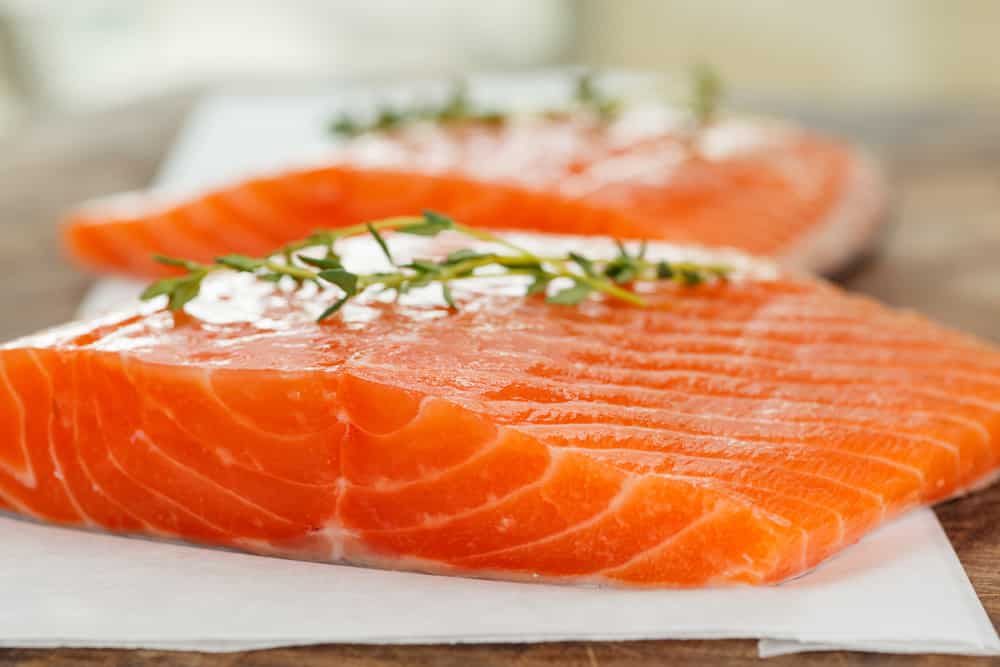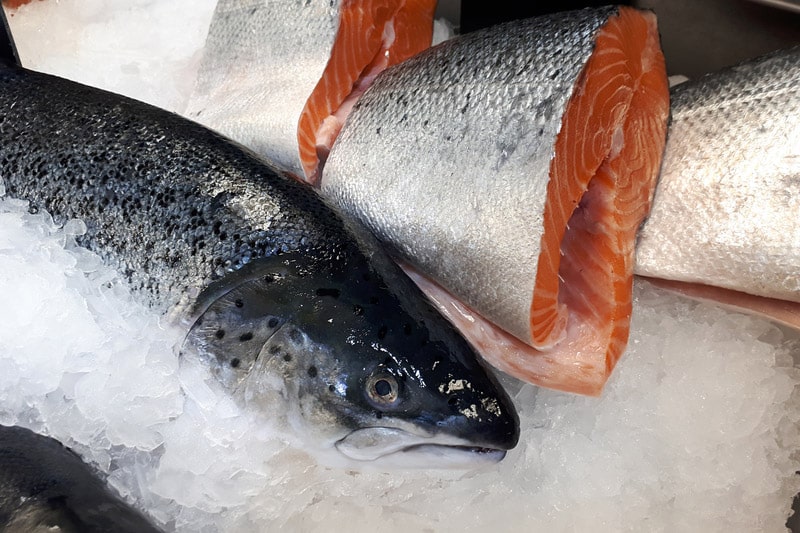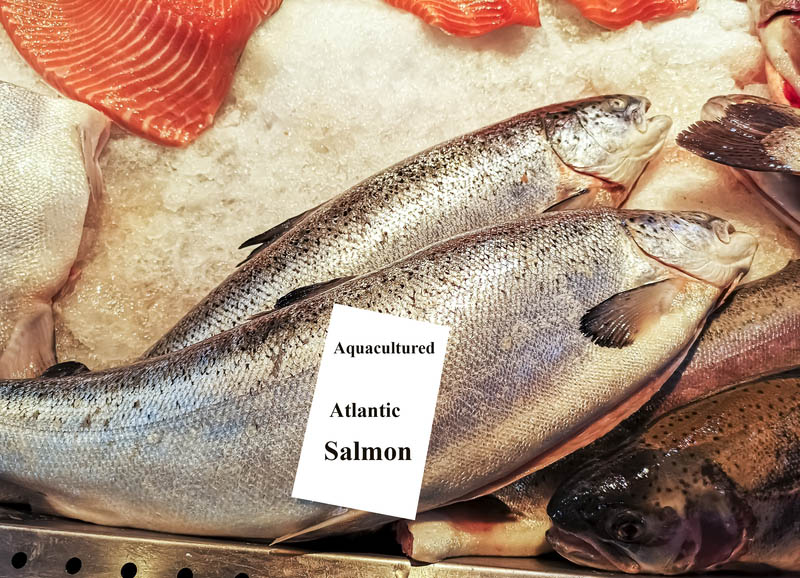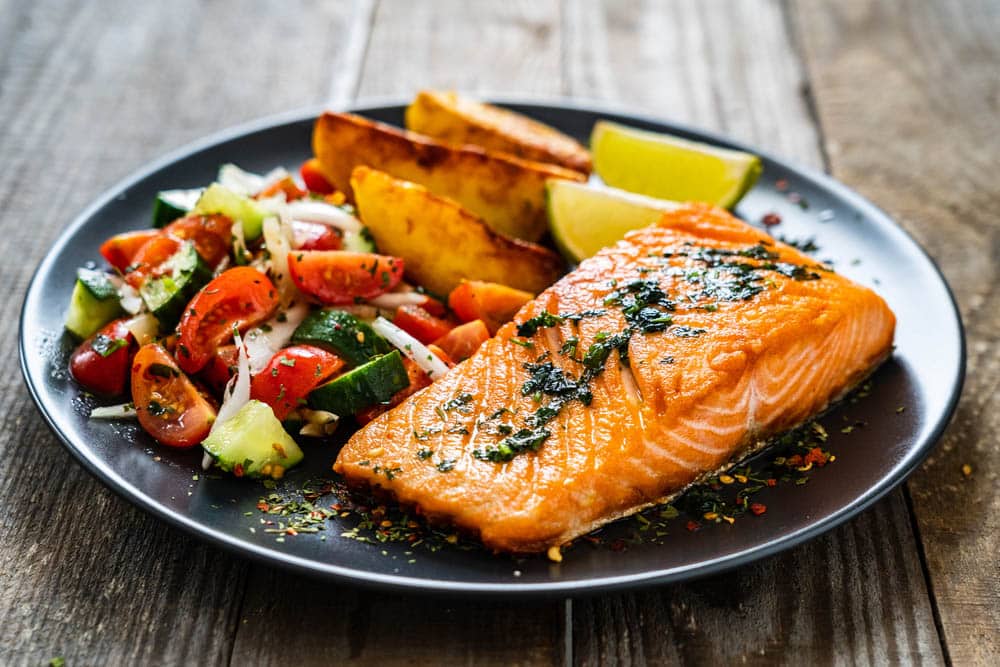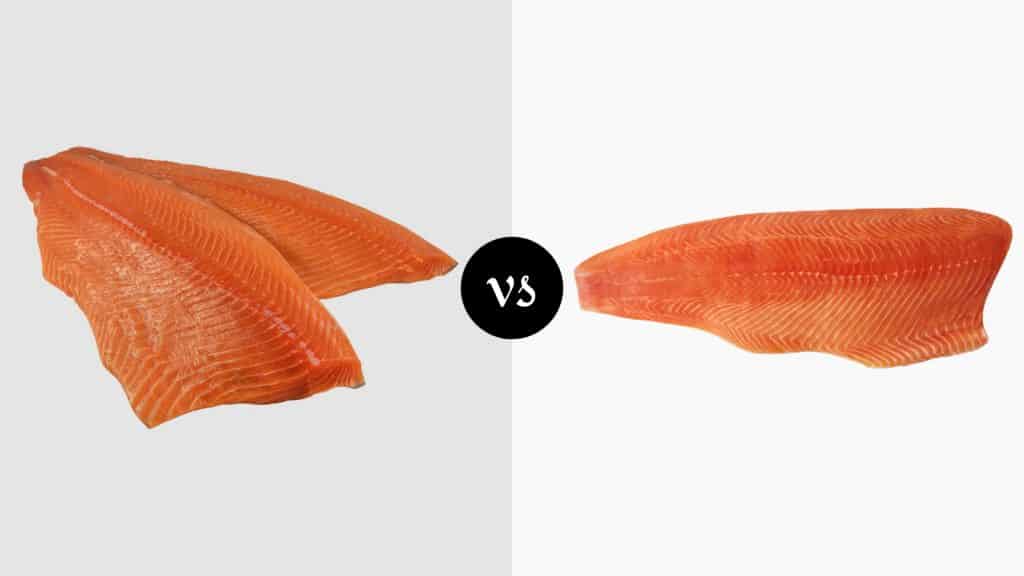
Fish is one of the important parts of a healthy diet. Salmon has become the go-to choice for many because of its amazing flavor and texture. Yet, not every type of salmon tastes like another. There is a massive difference in the intensity of flavor and the flesh from type to type.
We’re sharing everything about sockeye vs. Atlantic salmon so that you know which suits your personal preferences and upcoming cooking style best.
You’ll never get stuck serving fishy salmon to a guest or mild fish to a fish lover after reading our guide – we’ve got all the info to guide you to the best filet possible coming up.
Sockeye Vs. Atlantic Salmon Comparison
| Sockeye Salmon | Atlantic Salmon | |
|---|---|---|
| Names | Sockeye Salmon, Oncorhynchus Nerka, Red Salmon, Summer Salmon, Kokanee Salmon, Little Redfish, Silver Trout, Kokanee Trout, Kikanning, Kennerly's Salmon, Kennerly's Trout, Walla, Black Kokanee, Kunimasu, Oncorhynchus Nerka Kawamurae | Atlantic Salmon, Salmo Salar, Bay Salmon, Black Salmon, Caplin-Scull Salmon, Fiddler, Sebago Salmon, Silver Salmon, Outside Salmon, And Winish, Alevin, Fry, Parr, Grilse, Grilt, Kelt, Slink, Spring, Smolt, Ouananiche |
| Region | North Pacific Ocean And Connected Rivers, Lakes & Estuaries | Atlantic Ocean |
| Color | Begins In Freshwater With Blue Back With Black Speckles And White Stomach | At Sea Heads Turn Green | Once Seeking Mate, Male And Female Body Turns Bright Red | Wild Atlantic Salmon - Orangey-Pink Flesh With Bright Vivid Colors | Farmed Atlantic Salmon Lighter Orangey-Pink Flesh | Outer Skin - Dull Silver With Blue And Red Spots, Males Develop Black Spots In the Ocean, Females Remain Silvery Blue |
| Size | 1.5-2.5 Feet In Length, 1-15 Pounds Weight | 28-30-Inches Length, 8-12 Pounds Weight |
| Texture | Medium-Sized Flaky Flakes With Rich Firm Texture | Soft Tender Flesh With Large Buttery Flakes |
| Flavor | Intensely Fishy Flavor, Boldest Salmon Taste Possible | Mild Flavor Without Intense Fishiness |
| Serving Suggestion | Best For Grilling, Cedar Plank Cooking Recommended | Baking, Slow Roasted, Foil Cooking, Frying All Possible | Baked Or Pan Fried |
| Affordability | $20-$30 Per Pound | $10-$15 Per Pound |
| Considerations | Strongest Tasting Salmon Around With Fishy Flavor | Farmed-Raised Atlantic Salmon Only - Wild Caught Salmon Restricted |
Sockeye Vs. Atlantic Salmon
Our comparison of sockeye vs. Atlantic salmon supplies everything that you need to know to pick the perfect variety of fish for your next meal.
Sockeye Salmon
Anyone who is fond of the taste of salmon will fall in love with sockeye salmon’s strong taste. It’s fishy but firm with a great texture. Here’s a breakdown of what you can expect from this tasty wild-caught variety of fish.
Names
The scientific name for sockeye salmon is Oncorhynchus nerka. However, most know sockeye salmon as red salmon due to the bright red coloring that develops as they swim upstream to spawn towards the end of their lives.
Sockeye is also termed blueback salmon due to the blue tinge found in sockeye which lives in the sea. Summer salmon refers to sockeye that spawns in the fall. Finally, there is a variety of sockeye called kokanee salmon, which live their entire lives in freshwater.
Kokanee salmon are also known as little redfish, silver trout, kokanee trout, kikanning, Kennerly’s salmon, Kennerly’s trout, and Walla. There is also a species on the verge of extinction that was believed to be extinct from 1940 onward called the black kokanee.
Black kokanee, called “kunimasu” in Japanese, was a landlocked species that was eventually saved and then reclassified to a sockeye salmon subspecies scientifically termed Oncorhynchus nerka kawamurae.
Region
The majority of sockeye salmon caught commercially are situated in the Northern Pacific Ocean and the rivers connected to it. Alaska is a prime location.
Kokanee salmon are a variety of sockeye that live in the freshwater rivers and estuaries connected to the Northern Pacific and are farmed and fished by local populations in the vicinity.
The Pacific Ocean spanning the Columbia River to Japan’s Hokkaidō Island serves as a rich fishing span for sockeye salmon, with fish traveling as far north as Canada’s Bathurst Inlet and south to the extent of Redfish Lake, Idaho.
Color
Sockeye salmon who spent their lives swimming in the Pacific Ocean after growing up in freshwater lakes and streams are blue and are therefore known as bluebacks.
Sockeye salmon start off as spawn and grow for roughly four years in lakes and streams connected to the Pacific, and then they swim to the sea. During this time, the blueback sockeyes have black speckles, blue backs, and white stomachs.
After roughly eight weeks at sea, their heads turn green, and their skin thickens. Eventually, the orange-red pigment that colors sockeye’s flesh is moved to the body, which turns a vivid, bright red.
Both male and female sockeye turn red as a display of their health and fitness to attract a mate and heed off competitors.
Size
Sockeye is one of the smaller varieties of salmon, with kokanee being significantly smaller than other types. Pacific sockeye salmon generally range between 1.5 to 2.5 feet in length and weigh 4 to 15 pounds. Kokanee salmon are 1.2 feet at their largest.
Texture
Expect medium-sized flakes of fish that are firm but flaky. It’s not as soft as Atlantic salmon, but there’s still a fatty nature to each flake. The texture is rich, but the flakes are thinner than Chinook.
Flavor
Sockeye salmon has an intense flavor and rich texture. As a firm fish, it is high in fat which translates to a bolder flavor. The taste of salmon is cleaner and more pronounced than any other kind of salmon.
Due to the uniquely intense salmon taste, it is best to use simple spices and basic sauces to enjoy its full flavor.
Serving Suggestion
With compact, firm flesh, sockeye salmon is perfect for grilling. Grilled filets are best cooked skin-side down any turning required. Traditionally, sockeye salmon is cooked on a cedar plank which ensures that the fish doesn’t stick or end up overcooked.
This variety of extremely versatile – sockeye salmon can be baked, slow-roasted, cooked in foil, or grilled with great results. For people who want crispy fish, sockeye salmon can even be fried as well.
Affordability
While prices are relative to where in the world you’re shopping and which variety you’re buying, fresh or frozen, expect to pay in the region of $20 to $30 per pound.
This makes sockeye salmon slightly more expensive than Atlantic salmon and up to double or more the price of chum.
Considerations
It is important to keep in mind that sockeye salmon is the variety that tastes the most like salmon out of all eleven varieties fished commercially. This means that it has the distinctly fishy flavor that many people who aren’t overly fond of seafood find off-putting.
Atlantic Salmon
The largest of the Salmo genus is a tasty, farmed variety of fish with strict wild catch limits enforced globally for recreational fishermen.
Mild in flavor with a melt-in-your-mouth texture and just the right degree of flakiness, Atlantic salmon is a favorite for its light taste, affordability, and versatility. Let’s take a closer look at Atlantic salmon’s defining characteristics.
Names
The scientific name for the Atlantic salmon classification is Salmo salar, a species that’s the third biggest fish in the Salmonidae family, which includes Chinook and Siberian Taimen.
You’ll find Atlantic salmon referred to as bay salmon, black salmon, caplin-scull salmon, fiddler, Sebago salmon, silver salmon, outside salmon, and Winish.
Atlantic salmon are at times referred to by the names that classify their lifecycle, namely alevin, fry, parr, grilse, grilt, kelt, slink, spring and smolt. Additionally, there is also a landlocked variety that is seldom farmed called ouananiche.
Region
As their name suggests, Atlantic salmon are primarily found in the Atlantic ocean bordering northeast North America and in certain rivers across Europe. European Atlantic salmon thrive in Southerly waters to the extent of Spain and Northerly waters reaching Russia.
Color
The color of Atlantic salmon depends on whether it was fished out of a natural habitat or farmed by means of aquaculture. Wild Atlantic salmon has orangey-pink flesh with vivid brightness and variations of color.
Farmed salmon would have gray flesh if salmon farmers didn’t fortify their pellet-based contribution to the diet with artificial coloring that mimics the spectrum and hues developed naturally when wild salmon eat krill and shrimp and metabolize the reddish-orange keto-carotenoid terpene, astaxanthin.
Young Atlantic salmon still living in freshwater is a dull silver with blue and red spots. When they mature and enter the ocean, Atlantic salmon develop a silver-blue hue with an unmissable shimmer and black spots situated towards the top of their lateral line.
When traveling toward fresh water in search of mates, males develop a green or red color on their bodies, whereas females remain silvery-blue. You’ll find that all their fins except the tiny adipose just behind the dorsal are outlined in black.
Size
Expect the average Atlantic salmon to weigh in the region of 8 to 12 pounds while measuring 28 to 30-inches. Atlantic salmon can, however, reach extremely large sizes depending on how long they’ve lived in the ocean waters.
The largest Atlantic caught weighed 105 pounds and measured 60-inches. One of the most popular highlights of Atlantic salmon is the generous filet yield that each provides with just the right degree of thickness.
Texture
Atlantic salmon has soft, tender flesh with large buttery flakes. The exact firmness depends on the genes of the fish and its diet. Overall, it’s far softer than sockeye salmon but still firm to the touch.
Flavor
The flavor of Atlantic salmon is far milder than most other varieties. This makes it a suitable choice for those who aren’t fond of what they would call a “fishy” flavor. It has a bolder, more assertive flavor than hake or other light fish but is much lighter than sockeye or Chinook.
Serving Suggestion
The most popular way to cook Atlantic salmon is to bake or pan-fry it. A high heat controlled sear producing crispy skin finishes off a salmon filet to perfection with nothing more than light seasonings such as salt, pepper, lemon juice, and butter is recommended.
Bold flavors should be avoided, but the taste is mild enough to accommodate one or two intense tastes, such as red pepper flakes, cayenne pepper, or a herb like dill.
Affordability
Due to being farmed, Atlantic salmon are extremely affordable without compromising flavor. Expect to pay in the region of $10 to $15 per pound.
Considerations
The Atlantic salmon is farm-raised which makes it affordable. Wild Atlantic salmon is not available to commercial fisheries. Only farm-raised salmon is sold in restaurants and grocery stores. Anywhere serving or selling Atlantic salmon will be selling you fish sourced from farms.
What Is The Difference Between Sockeye And Atlantic Salmon?
The main difference between sockeye and Atlantic salmon is that sockeye salmon is a wild-caught smaller variety with higher fat content and tighter flakes that are bold in fishy, oily flavor, whereas Atlantic salmon is farmed, larger and mild in flavor without bold “fishiness.”
Which Is Best Between Sockeye Vs. Atlantic Salmon?
The best between sockeye vs. Atlantic salmon depends on how you intend to prepare the fish and what intensity of flavor you’re looking for. Seafood fans who find a boldly fishy taste welcoming should go for tasty sockeye salmon.
It’s also the best variety for showcasing the flavor of salmon. Anyone who prefers light to mild fish should opt for Atlantic salmon. It’s also generally the best type to use when you want to feature several other bold tastes in your fish dish.
